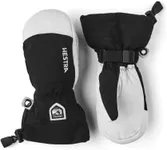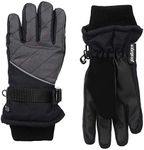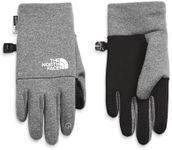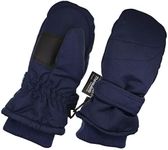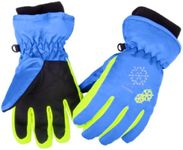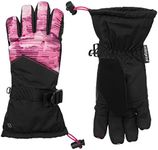Buying Guide for the Best Child Snow Gloves
Choosing the right snow gloves for your child is essential to ensure they stay warm, dry, and comfortable while playing in the snow. The right pair of gloves will protect their hands from the cold and wet conditions, allowing them to enjoy their time outdoors without any discomfort. When selecting snow gloves, consider factors such as insulation, waterproofing, fit, and durability. Understanding these key specifications will help you make an informed decision and find the best gloves for your child's needs.InsulationInsulation is the material inside the gloves that keeps your child's hands warm. It is important because it helps retain body heat and prevents cold air from getting in. Insulation can be made from various materials such as synthetic fibers or down. For mild winter conditions, lightweight insulation is sufficient, while for extremely cold weather, you may need gloves with heavy insulation. Consider your local climate and how long your child will be outside when choosing the level of insulation.
WaterproofingWaterproofing is the glove's ability to keep water out, ensuring your child's hands stay dry. This is crucial because wet hands can quickly become cold and uncomfortable. Waterproof gloves are typically made with special membranes or coatings that repel water. Look for gloves labeled as 'waterproof' or 'water-resistant.' If your child will be playing in wet snow or slushy conditions, opt for fully waterproof gloves. For drier, powdery snow, water-resistant gloves may suffice.
FitThe fit of the gloves is important for comfort and functionality. Gloves that are too tight can restrict movement and circulation, while gloves that are too loose may let in cold air and snow. To find the right fit, measure your child's hand and compare it to the glove sizing chart provided by the manufacturer. Ensure there is enough room for your child to wiggle their fingers but not so much that the gloves feel bulky. Adjustable straps or elastic cuffs can help achieve a better fit.
DurabilityDurability refers to how well the gloves can withstand wear and tear. This is important because children are often rough on their gear, and you want the gloves to last through the winter season. Look for gloves made with reinforced palms and fingers, as these areas tend to experience the most stress. High-quality materials and sturdy stitching also contribute to the gloves' durability. If your child is particularly active or tends to be hard on their gloves, prioritize durability when making your selection.
BreathabilityBreathability is the glove's ability to allow moisture and sweat to escape while keeping water out. This is important because it helps keep your child's hands dry from the inside, preventing them from becoming clammy and cold. Breathable gloves are made with materials that allow air to circulate. If your child tends to sweat a lot or will be engaging in high-energy activities, look for gloves with good breathability. This will ensure their hands stay comfortable and dry throughout their playtime.
Ease of UseEase of use refers to how easy it is for your child to put on and take off the gloves. This is important because children may need to remove their gloves frequently to adjust their gear or take a break. Look for gloves with features like wide openings, easy-to-use zippers, or Velcro closures. Mittens can be easier for younger children to manage, while older kids may prefer gloves with individual fingers for better dexterity. Consider your child's age and ability to handle their gloves independently when making your choice.

